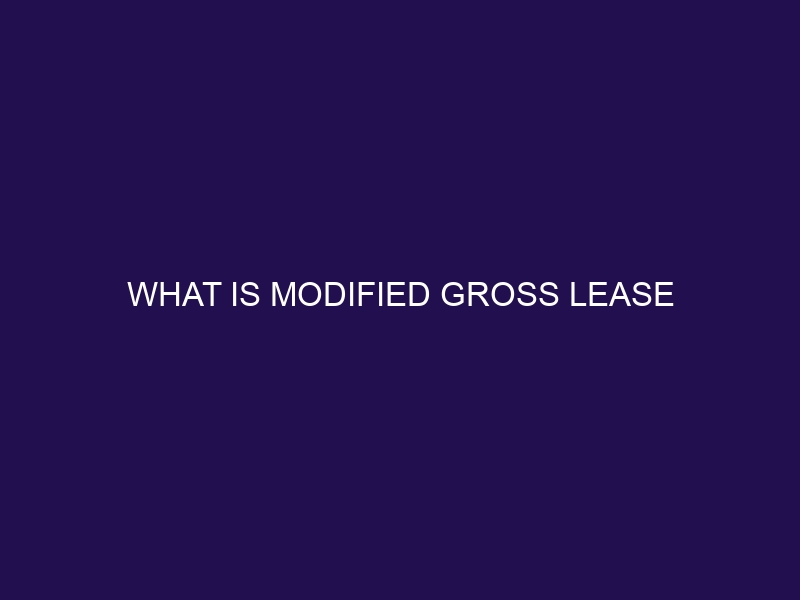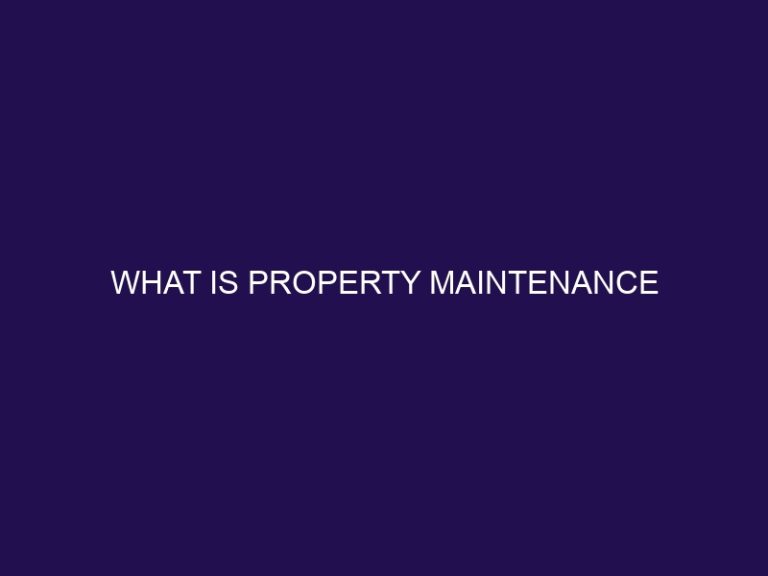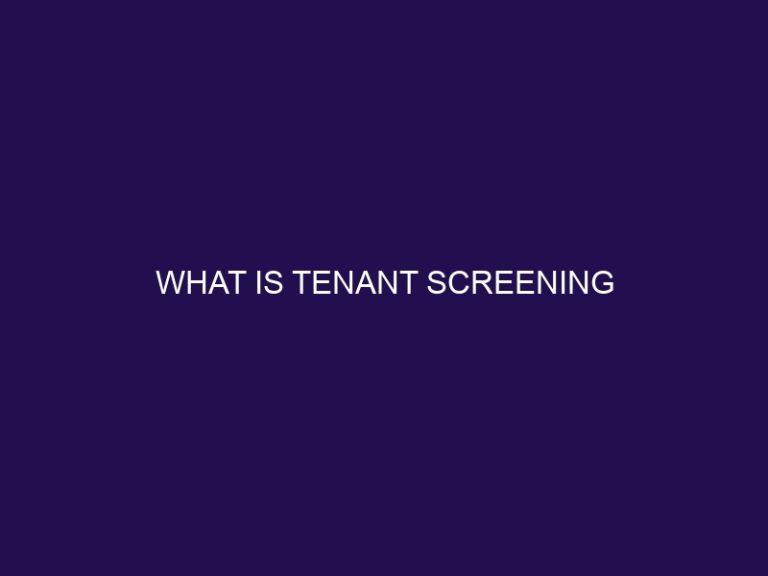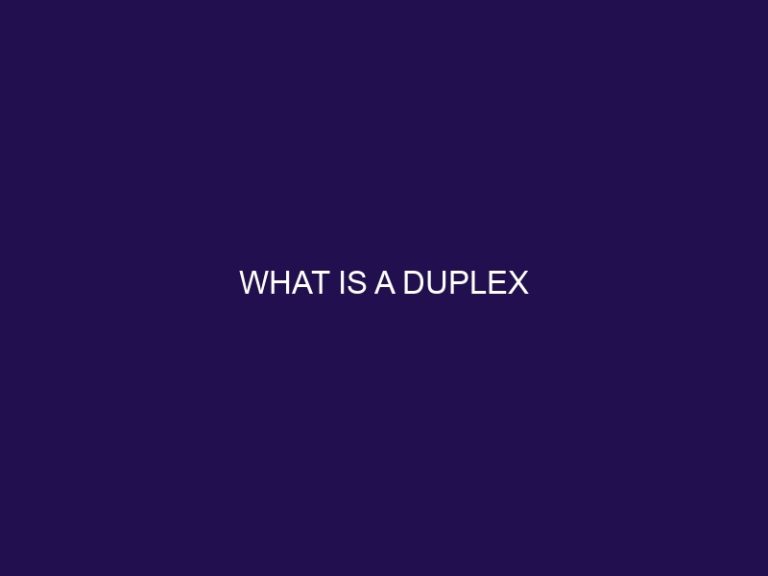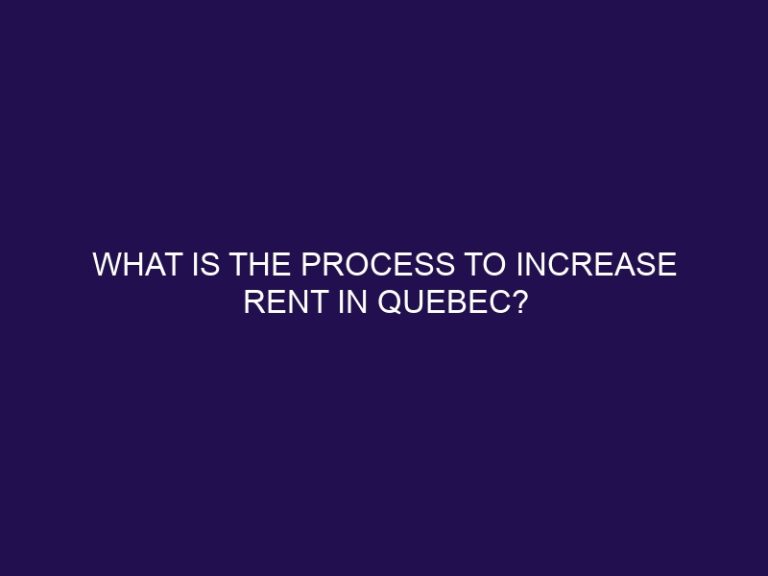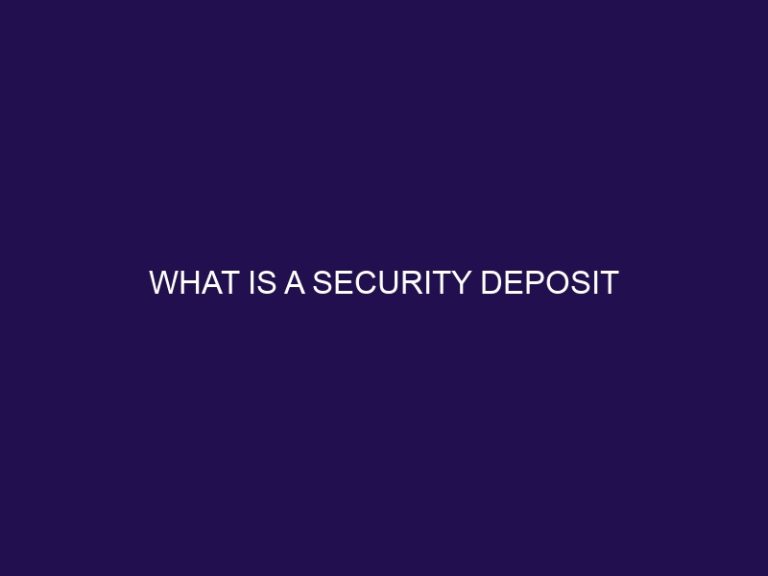What is Modified Gross Lease
Understanding lease agreements is essential for both tenants and landlords to ensure a clear understanding of the terms and conditions involved in their rental arrangement. One type of lease commonly used is the gross lease, but there is also another variant known as the modified gross lease. In this article, we will explore what exactly a modified gross lease entails and its key components, benefits, and considerations for both parties involved.
A gross lease is a rental agreement where the tenant pays a fixed amount of rent, and the landlord is responsible for covering all expenses associated with the property such as property taxes, insurance, and maintenance. On the other hand, a modified gross lease is a hybrid lease agreement that combines elements of both gross and net leases. It typically involves the tenant being responsible for some additional expenses while the landlord still handles major costs.
This article will first provide a detailed definition and overview of a modified gross lease, highlighting its key features and how it differs from a gross lease. Then, we will discuss the essential components of a modified gross lease, including base rent, additional expenses, and tenant responsibilities. we will explore the benefits of a modified gross lease for both tenants and landlords.
Tenants and landlords should also consider certain factors when entering into a modified gross lease, such as having a clear understanding of lease terms and the negotiation of additional expenses. Examples and case studies will be provided to illustrate real-life scenarios and showcase the practical applications of a modified gross lease.
By the end of this article, readers will have a comprehensive understanding of what a modified gross lease is, its advantages, and important considerations for both tenants and landlords.
Understanding Lease Agreements
When entering into a modified gross lease, it is crucial to understand lease agreements. This type of lease is a hybrid between a gross lease and a net lease, implying that the tenant pays some expenses along with the rent. To comprehend the tenant’s responsibilities and what expenses are included, it is important to thoroughly review the lease agreement. In a modified gross lease, common expenses such as property taxes, insurance, and maintenance costs may be included. Having a good understanding of lease agreements empowers tenants to make informed decisions and prevent any potential misunderstandings or disputes.
What Is a Gross Lease?
A gross lease, also known as a full-service lease, is a type of commercial lease agreement that encompasses all operating expenses, such as utilities, maintenance, and property taxes, in a fixed fee paid by the tenant. In this lease arrangement, the landlord assumes responsibility for managing and covering these costs, which are typically included in the monthly rent. By offering a straightforward and predictable payment structure, a gross lease enables tenants to accurately allocate their monthly budget. Additionally, this type of lease safeguards tenants from any unexpected additional expenses that the landlord might try to pass on. Ultimately, a gross lease promotes convenience and stability for both parties involved in the lease agreement.
What Is a Modified Gross Lease?
When it comes to leasing agreements, one term that often pops up is the modified gross lease. So, what exactly is a modified gross lease and how does it differ from a gross lease? In this section, we’ll dive into the definition and overview of a modified gross lease, as well as explore the key differences between a gross lease and a modified gross lease. Get ready to unravel the intricacies of these lease types and gain a better understanding of how they can impact your real estate transactions.
Definition and Overview of Modified Gross Lease
- Definition: A modified gross lease is a lease agreement that combines elements of both a gross lease and a net lease. It involves the tenant paying a base rent that includes certain expenses, while the landlord covers other expenses.
- Overview: A modified gross lease provides a shared responsibility for expenses between the tenant and the landlord, combining the benefits of both gross and net leases.
- Differences: Unlike a gross lease where the tenant pays a fixed amount, a modified gross lease allows for fluctuating expenses. The details of which expenses are included in the base rent are typically negotiated between the tenant and the landlord.
- Key Components:
- Base Rent: The fixed amount paid by the tenant, which includes some expenses.
- Additional Expenses: Other expenses, such as maintenance and utilities, that are covered by the landlord.
- Tenant Responsibilities: The tenant may still have some responsibilities, such as minor repairs and janitorial services.
- Benefits: A modified gross lease provides flexibility for both tenants and landlords, allowing for shared expenses and reducing the administrative burden.
- Considerations:
- Clear Understanding of Lease Terms: It is essential for both parties to fully understand and agree upon the terms and specific expenses included in the base rent.
- Negotiation of Additional Expenses: Tenants and landlords should discuss and negotiate additional expenses to avoid any potential confusion or disputes.
- Examples and Case Studies: Various real estate scenarios and examples can demonstrate the application and advantages of a modified gross lease.
A modified gross lease offers a middle ground between a gross and net lease, providing a customized approach to shared expenses between tenants and landlords. This type of lease can benefit both parties by providing flexibility and reducing the financial and administrative burdens.
Differences Between Gross Lease and Modified Gross Lease
- A gross lease is a lease agreement where the tenant pays a fixed rental amount, and the landlord is responsible for all expenses related to the property.
- A modified gross lease is a lease agreement that falls in between a gross lease and a triple net lease, where the tenant and landlord share expenses.
- The key differences between a gross lease and a modified gross lease include the allocation of expenses. In a gross lease, the landlord covers all expenses, while in a modified gross lease, the tenant pays a portion of the expenses.
- Another significant difference is the degree of control. In a gross lease, the landlord has more control over the property, while in a modified gross lease, the tenant has more responsibility and control.
- The cost structure also varies. In a gross lease, the tenant pays a fixed rent amount, while in a modified gross lease, the tenant pays a base rent plus a portion of the expenses.
Key Components of a Modified Gross Lease
When it comes to understanding a modified gross lease, it’s crucial to grasp its key components. In this section, we’ll dive into the three essential aspects: base rent, additional expenses, and tenant responsibilities. We’ll uncover the significance of these components and how they shape the agreement between the landlord and tenant. So, buckle up and get ready to explore the impact of each element in a modified gross lease.
Base Rent
Base rent is a non-negotiable fixed amount of money that a tenant pays to the landlord for the use of a property. It is an integral component of a lease agreement and is typically stated in terms of a monthly payment. The specific amount of base rent is mutually agreed upon between the tenant and the landlord prior to signing the lease. Clearly understanding and reaching an agreement on the base rent is crucial for both parties to prevent future disputes or misunderstandings. To ensure a fair deal, it is advisable to research the market rates for similar properties in the area when negotiating the base rent.
Additional Expenses
Additional expenses in a modified gross lease refer to costs that are not included in the base rent and are typically shared between the tenant and landlord. These expenses can vary depending on the lease agreement but commonly include:
- Utilities: Tenants may be responsible for paying for their usage of electricity, water, gas, and other utilities.
- Common Area Maintenance (CAM) fees: These fees cover the maintenance and upkeep of shared areas, such as hallways, parking lots, and elevators.
- Taxes and insurance: Some leases require tenants to contribute to property taxes and insurance premiums.
- Repairs and maintenance: Tenants may be responsible for the costs of repairs and regular maintenance of the leased space.
- Janitorial services: If the lease specifies, tenants may need to cover the expenses of cleaning services for their premises.
It is important for tenants and landlords to have a clear understanding of the additional expenses outlined in the lease agreement to avoid misunderstandings. Negotiating a fair distribution of these costs can contribute to a more harmonious landlord-tenant relationship.
Tenant Responsibilities
- Payment of Base Rent
- Utilities
- Maintenance and Repairs
- Insurance
- Compliance with Lease Terms
Tenants are accountable for paying the agreed-upon base rent amount, which is typically a fixed monthly or annual payment.
Tenants may have the obligation to pay certain utility expenses, such as electricity, water, and gas.
Tenants are often in charge of the regular maintenance and minor repairs of the leased space, including tasks like cleaning, replacing light bulbs, and fixing minor damages.
Tenants might be required to obtain and maintain adequate insurance coverage for their personal property and liability.
Tenants must adhere to all the terms and conditions specified in the lease agreement, including rules regarding noise, alterations, and use of the premises.
It is essential for tenants to thoroughly review and understand their responsibilities before signing a modified gross lease. Discussing any potential concerns or negotiating specific terms with the landlord can help ensure a smooth landlord-tenant relationship.
Remember to clearly communicate your expectations and seek legal counsel if needed to protect your rights and interests as a tenant.
Benefits of a Modified Gross Lease
Benefits of a Modified Gross Lease
A modified gross lease offers several benefits to both landlords and tenants in a commercial real estate setting. By considering the advantages of this lease structure, both parties can find a lease agreement that best suits their needs and preferences.
1. Simplified expenses: One of the key benefits of a modified gross lease is the simplified expense structure. In this type of lease, the landlord typically handles operating expenses such as property taxes, insurance, and maintenance costs. This arrangement provides tenants with more predictable monthly payments, which can greatly help with budgeting.
2. Flexibility: Unlike a triple net lease, where tenants are solely responsible for all expenses, a modified gross lease allows for negotiation and customization of expense responsibilities. This flexibility benefits both landlords and tenants, as they can collaboratively determine which expenses should be allocated to which party.
3. Cost savings: With a modified gross lease, tenants can avoid unexpected and potentially high costs associated with property management and maintenance. By having the landlord be responsible for certain expenses, such as repairs or upgrades, tenants can save money and allocate their resources more efficiently.
4. Streamlined management: Landlords also benefit from a modified gross lease. By reducing the administrative burden of billing and collecting separate expenses, this lease structure makes property management more streamlined and efficient. Landlords can focus on other tasks as they do not have to constantly handle multiple invoices and expense calculations.
5. Attractive to tenants: The predictable and simplified payment structure of a modified gross lease makes it an appealing option for tenants. This type of lease offers financial stability and ease of budgeting, which can be highly attractive to businesses looking to manage their cash flow effectively.
By weighing the benefits of a modified gross lease, both landlords and tenants can find a mutually beneficial lease structure that meets their specific requirements and preferences.
Considerations for Tenants and Landlords
When it comes to considering the needs of both tenants and landlords in a modified gross lease, there are important factors to keep in mind. In this section, we’ll dive into the key considerations that play a role in this type of lease agreement. From gaining a clear understanding of lease terms to navigating the negotiation of additional expenses, we’ll explore the essential aspects that both parties need to be aware of to ensure a smooth and fair leasing experience.
Clear Understanding of Lease Terms
When entering into a lease agreement, it is crucial to have a clear understanding of the terms outlined in the contract. Here are a few key considerations for tenants and landlords to ensure a precise comprehension of lease terms:
1. Thoroughly review the lease document, paying close attention to aspects such as rent payment details, lease duration, and any restrictions or responsibilities. This comprehensive assessment will help in achieving a clear understanding of lease terms.
2. Seek clarification on any ambiguous or unfamiliar terms or clauses. Don’t hesitate to ask questions or consult legal advice if necessary. By doing so, you can actively pursue a clear understanding of lease terms.
3. Document all agreed-upon terms and amendments in writing to avoid misunderstandings or disputes later on. This practice contributes to a clear understanding of lease terms and prevents potential conflicts.
4. Regularly communicate and maintain open lines of dialogue with the landlord to address any concerns or questions that may arise throughout the lease term. This proactive approach ensures a consistent and clear understanding of lease terms for both parties.
By prioritizing a clear understanding of lease terms, both tenants and landlords can establish a solid foundation for a mutually beneficial landlord-tenant relationship.
Negotiation of Additional Expenses
- Thoroughly review the lease agreement to grasp the inclusion of negotiation of additional expenses.
- Prepare a list of arguments and supporting documentation to identify and exclude expenses that you think should not be be part of the lease.
- Schedule a meeting with the landlord to effectively communicate your concerns and negotiate the terms regarding additional expenses.
- Cogently express your reasons for requesting modifications to the expenses and furnish any evidence or market comparisons to bolster your case.
- Consider potential compromises or alternatives that may be agreeable to both parties, such as implementing a cap on certain expenses or sharing the cost based on occupancy.
- Thoroughly document any alterations or agreements made throughout the negotiation process in writing, and ensure that both parties sign and retain a copy for future reference.
Examples and Case Studies
Examples and case studies are valuable resources when it comes to comprehending the concept of a modified gross lease. One particular instance showcases a scenario where a commercial tenant leases a space, and the landlord assumes responsibility for certain expenses such as property taxes and maintenance, although not all utilities. This particular lease arrangement can also be observed in residential leasing arrangements, wherein the landlord takes care of specific services, like garbage collection, while the tenant is responsible for other utilities. Case studies offer real-life scenarios that exemplify the advantages and potential difficulties associated with a modified gross lease, aiding both landlords and tenants in making well-informed decisions.
Frequently Asked Questions
What is a modified gross lease?
A modified gross lease is a type of commercial lease agreement that combines elements of both gross and net leases. It involves a unique set of benefits and expense division between the tenant and the landlord.
What are the main features of a modified gross lease?
A modified gross lease typically includes some expenses in the base rental rate and base year expenses, while others are passed through on a pro rata share and reconciled annually. It offers a balance between stability in monthly payments and potential variability in expenses.
What expenses are covered by a modified gross lease?
The specific expenses covered by a modified gross lease can vary depending on the lease agreement. Generally, the landlord takes care of property taxes, insurance, and major exterior and interior maintenance, while the tenant is responsible for utilities, smaller interior maintenance, and non-major repairs.
How is the rent calculated in a modified gross lease?
In a modified gross lease, the rent is typically calculated by considering the base rental rate plus the tenant’s proportionate share of operating expenses, such as insurance, common area maintenance, and real estate taxes. These expenses are often determined during the base year.
What are the advantages of a modified gross lease for tenants?
A modified gross lease offers tenants stability in monthly payments while still allowing for some flexibility in expense responsibilities. It provides a more comprehensive understanding of the potential costs and can suit a tenant’s specific needs based on the reimbursement structures and expense groups defined in the lease agreement.
Are there any drawbacks to a modified gross lease?
One potential drawback of a modified gross lease is the variability in expenses that tenants may experience. Since some expenses are reconciled annually based on the tenant’s pro rata share, there may be fluctuations in operating costs from year to year. It’s crucial for tenants to carefully review and understand the expense stop and reconciliation provisions in the lease.

